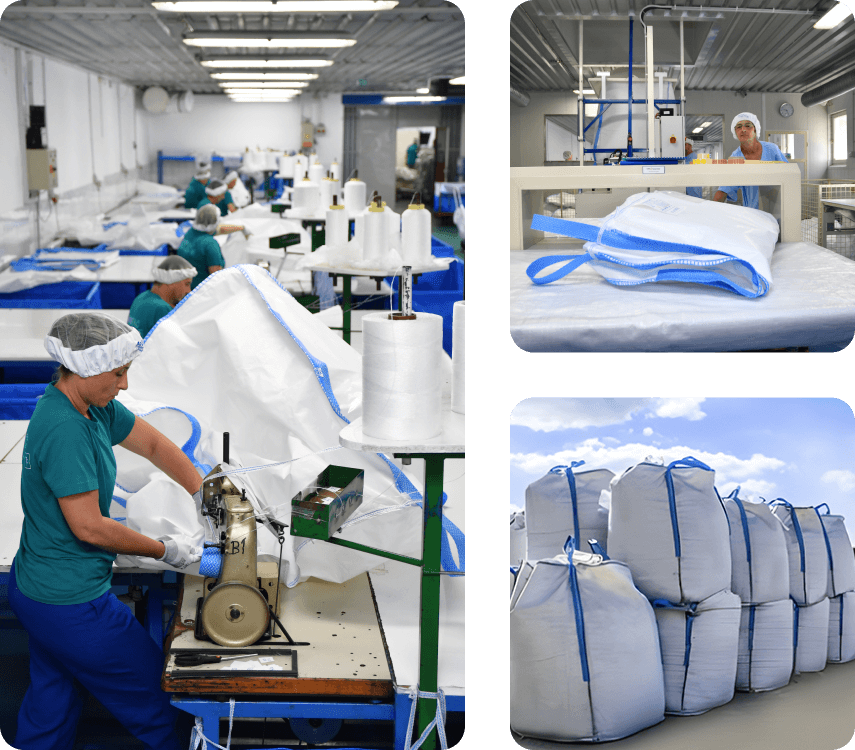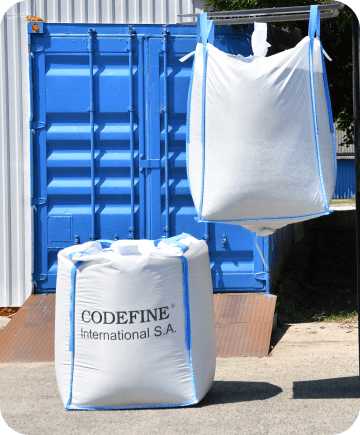Home » Posts Page » Blog » Codefine » How to Audit Your Bulk Packaging Process for Efficiency Gains

A bulk packaging audit represents a systematic evaluation of your entire packaging operation, examining everything from material selection and equipment performance to workflow design and waste management. This strategic assessment serves as the foundation for meaningful operational improvements that can transform your bulk packaging process from a cost center into a competitive advantage.
Companies that conduct regular packaging audits typically discover opportunities for substantial cost reduction through optimized material usage, streamlined workflows, and enhanced equipment utilization. Whether you’re using Flexible Intermediate Bulk Containers (FIBCs), container liners, polypropylene bags, or other bulk packaging solutions, an audit reveals inefficiencies that drain resources and compromise productivity. Beyond pure financial benefits, these audits frequently reveal ways to minimize waste generation, improve sustainability metrics, and enhance overall productivity throughout your packaging operations.
Many organizations remain unaware of common packaging inefficiencies that are often hidden in plain sight: excessive material use, suboptimal equipment settings, redundant handling steps, and inconsistent quality control procedures. A comprehensive audit brings these issues to light, allowing for targeted improvements that yield cumulative benefits across your production system.
The return on investment potential of packaging audits proves remarkably strong, with improvement opportunities often paying for the audit process many times over. Organizations frequently discover that relatively small procedural or material changes can yield significant operational gains that compound over time.
The timing for packaging audits varies by industry and operational complexity; however, many industry professionals recommend conducting comprehensive reviews annually, with mini-audits conducted quarterly. Specific triggers that warrant immediate audits include significant cost increases, quality issues, new product introductions, changes in regulations, or shifts in sustainability requirements from customers or regulatory bodies.
While audit methodologies vary, effective approaches typically combine quantitative measurements with qualitative assessments of current practices, creating a multi-dimensional view of your packaging operation that balances efficiency, quality, and sustainability considerations.
Effective packaging audits begin with thorough preparation and assembly of a cross-functional team representing key operational areas. This team should include representatives from production, quality control, purchasing, sustainability, and finance to ensure all perspectives are considered. Before launching the audit, establish clear objectives, timelines, and expectations to guide the process and keep the team focused on high-impact areas.
Data collection forms the backbone of any successful audit, combining both quantitative measurements and qualitative observations. Develop standardized documentation tools to capture information consistently across different shifts, production lines, or facilities. Consider using digital tools that allow real-time data entry and analysis while creating an accessible repository of findings that can be referenced during deployment phases.
Mapping current packaging workflows provides critical insights into process inefficiencies. Use process flow diagrams and time-motion studies to document every step in your packaging operation, from material receiving through final product shipment. This visual representation helps identify redundant steps, unnecessary material movements, and opportunities for workflow optimization that might otherwise remain hidden.
Identifying and tracking appropriate key performance indicators (KPIs) transforms subjective impressions into objective measurements. Essential metrics typically include material usage per unit, packaging cycle time, defect rates, labor hours per production unit, warehouse space utilization, and packaging-related waste generation. Establish baseline measurements for these metrics before deploying changes so you can accurately quantify improvements.
Stakeholder engagement proves vital for successful audit deployment. Communicate the audit’s purpose and potential benefits clearly to all affected teams, emphasizing how improvements will address current pain points. Solicit input from frontline workers who interact with packaging processes daily and may have valuable insights that management lacks. Create regular update mechanisms to keep stakeholders informed throughout the audit and deployment process.
The most effective audits balance analytical rigor with practical deployment potential. As you move through the audit process, continuously evaluate findings in terms of both improvement potential and deployment feasibility. Some high-impact changes may require minimal investment or disruption, making them ideal early wins that build momentum for more complex improvements.
Material usage analysis often reveals significant optimization opportunities in bulk packaging operations. Examine specifications for all packaging components, comparing actual usage against theoretical requirements. Look for instances of overpacking, excessive material thickness, or unnecessary components that add cost without value. Consider alternative materials that might provide equivalent protection with less weight or volume. For FIBCs, evaluate whether current bag types (A, B, C, or D) and constructions (standard, baffle, U-panel, or Q-bag) align with actual operational requirements or if simpler, more cost-effective options might suffice for certain applications.
Equipment performance evaluation should encompass efficiency, reliability, and capability assessments. Measure actual production rates against manufacturer specifications and identify factors limiting throughput. Analyze downtime patterns to determine root causes of production interruptions. Assess maintenance practices and spare parts management for opportunities to improve equipment reliability. Evaluate whether current equipment capabilities align with packaging requirements or if upgrades could yield efficiency gains.
Labor efficiency analysis examines how effectively human resources are deployed throughout your packaging operation. Study workflow patterns to identify unnecessary movements, waiting time, or redundant activities. Analyze staffing levels across different shifts and production runs to optimize labor allocation. Evaluate training programs and standard operating procedures for opportunities to enhance productivity and consistency. Consider ergonomic factors that might affect worker performance and safety, particularly for operations handling heavy bulk packaging like FIBCs or large polypropylene bags.
Quality control assessment should examine both inspection methods and defect patterns. Analyze rejection rates at different production stages to identify problem areas. Evaluate inspection procedures for effectiveness and efficiency, looking for opportunities to apply automated or inline quality verification. Study customer complaints related to packaging to identify issues that might be escaping internal quality controls. Consider applying statistical process control methods to address variation and improve consistency.
Storage and inventory management significantly impact overall packaging efficiency. Audit warehouse organization and space utilization, looking for opportunities to optimize storage density and reduce retrieval time. Analyze inventory levels and turnover rates for packaging materials to identify excess stock or stockout risks. Evaluate material flow patterns from receiving through production to identify bottlenecks or inefficient movements.
Effective data interpretation transforms raw audit findings into actionable insights. Look beyond isolated observations to identify underlying patterns and relationships between different aspects of your packaging operation. Group similar issues to understand systemic causes rather than just addressing symptoms. Compare performance metrics against industry benchmarks to identify areas where your operation lags behind best practices.
Cost-benefit analysis provides the financial foundation for improvement prioritization. Quantify both the initial investment and ongoing costs associated with each potential improvement. Estimate expected benefits in terms of direct cost savings, productivity gains, waste reduction, and quality improvements. Calculate payback periods and return on investment for major changes to support funding requests.
A prioritization matrix helps focus deployment efforts on high-impact opportunities. Plot potential improvements based on deployment difficulty versus expected benefit to identify “quick wins” that offer substantial benefits with minimal effort. Consider dependencies between different improvements to develop logical deployment sequences. Evaluate resource requirements against availability to ensure deployment feasibility.
Risk assessment examines potential negative consequences of proposed changes. Identify critical packaging functions that must be maintained throughout any transition. Evaluate how changes might affect product protection, production speed, or compliance requirements. Develop contingency plans for addressing potential issues during deployment.
We’ve spent decades getting our hands dirty in the mining industry, and at Codefine, we use that real-world experience alongside our global reach to tackle your toughest packaging problems. Before recommending anything, we take the time to really understand your materials, how you handle them, and the conditions you’re working in—because cookie-cutter solutions just don’t cut it.
You’ll find our manufacturing plants in all the places that matter for mining—Australia, Africa, North and South America—so you’re never left waiting for supplies. No matter which facility your order comes from, our ISO certification and quality checks ensure you get the same reliable performance every time.
Looking to keep moisture out? Our bulk bags are designed to do exactly that. Need something different? Take a look at our full range of packaging solutions online, or better yet, get in touch and tell us what you’re up against. We love a good challenge.
